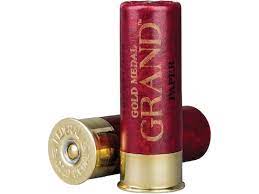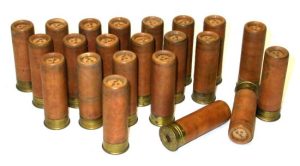Paper Shotgun Shells
Paper shotgun shells have gained significant attention in recent years as an alternative to traditional plastic or brass shells. This article aims to explore the advantages of using paper as a material for shotgun shells, provide a comprehensive analysis of its properties, and evaluate the performance and environmental impact of paper shotgun shells. By examining these aspects, we can better understand the potential benefits and drawbacks of this innovative ammunition option.

Exploring the Advantages of Paper Shotgun Shells
Paper shotgun shells offer several advantages over their traditional counterparts. Firstly, the use of paper as a material reduces the weight of the shell, resulting in a lighter load for shooters. This reduction in weight can enhance the maneuverability of the shotgun and reduce fatigue during extended shooting sessions. Additionally, the paper material allows for better customization, as it can easily be printed with various designs or patterns to suit the shooter’s preference or brand identity.
Furthermore, paper shells are biodegradable, making them a more environmentally friendly option. Unlike plastic or brass shells that take hundreds of years to decompose, paper shells break down naturally within a short period. This reduces the amount of waste left behind after shooting activities, promoting sustainable practices in the field and reducing the impact on the environment.

A Comprehensive Analysis of Paper as a Material for Shotgun Shells
Paper has unique properties that make it suitable for shotgun shells. It is lightweight, flexible, and cost-effective to produce, making it an attractive option for manufacturers. The paper can be reinforced with thin layers of wax or plastic to enhance its durability and resistance to moisture, ensuring reliable performance in various weather conditions. This reinforcement also prevents the paper from disintegrating when used in shotguns with automatic or pump-action mechanisms.
However, paper shells may have limitations when it comes to water resistance. Although the wax or plastic coating provides some protection, prolonged exposure to water may cause the paper to weaken or disintegrate, potentially impacting the performance of the shell. Therefore, shooters using paper shotgun shells should be cautious when using them in wet or humid environments to ensure optimal functionality.
Evaluating the Performance and Environmental Impact of Paper Shotgun Shells
When it comes to performance, paper shotgun shells exhibit similar ballistic characteristics to traditional shells. They offer reliable power, accuracy, and consistent patterns when fired. However, it is crucial to consider the specific load and design of the shell, as this can greatly influence its performance. Shooters should experiment with different loads to find the most effective option for their shooting style and preferences.

From an environmental perspective, paper shotgun shells have a significantly reduced impact compared to plastic or brass shells. The biodegradable nature of paper ensures that spent shells break down quickly, minimizing litter and environmental pollution. Additionally, the use of renewable resources in paper production further contributes to sustainable practices. However, it is essential to dispose of used paper shells responsibly by either composting or recycling them to maximize their environmental benefits.
Paper shotgun shells offer a range of advantages, including lighter weight, customization options, and environmental friendliness. The unique properties of paper, combined with careful design and reinforcement, make it a viable material for shotgun shells. While it may have limitations in terms of water resistance, proper care and awareness can mitigate any potential issues. As shooters and manufacturers continue to explore sustainable and innovative options, paper shotgun shells present an enticing alternative to traditional ammunition.
# # #


Comments